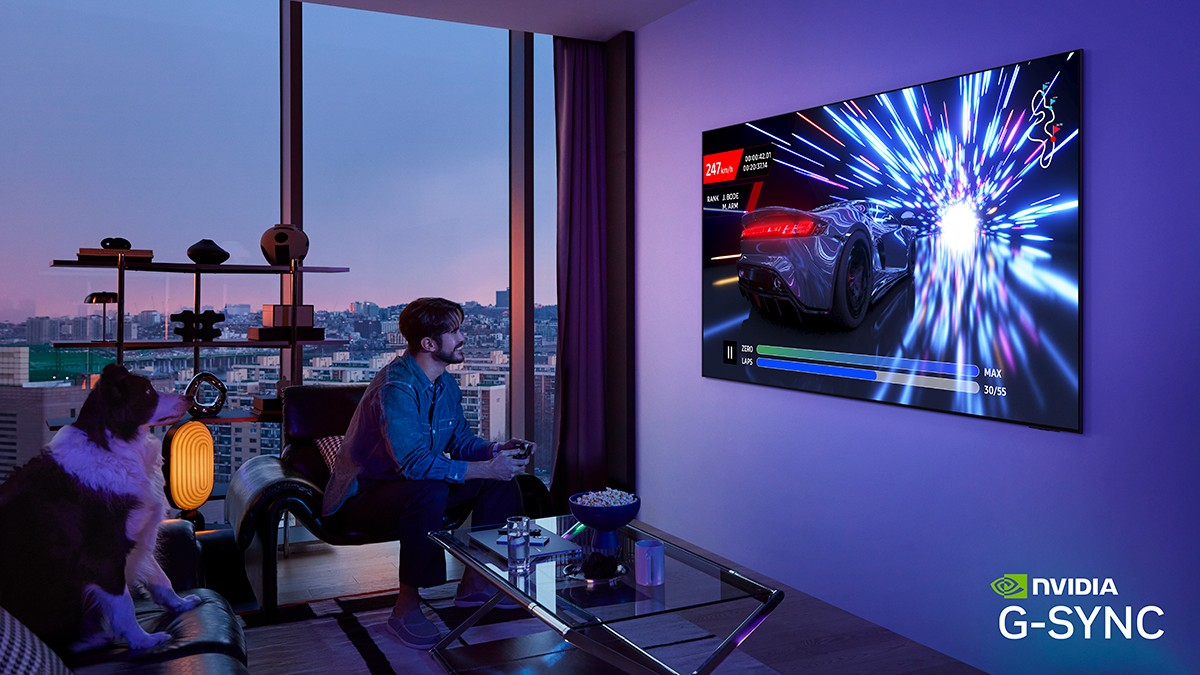Samsung is finally bringing Nvidia G-Sync and AMD FreeSync Premium Pro to its OLED TVs

Samsung has finally announced that its 2025 OLED TV line-up will feature compatibility for Nvidia G-Sync, in what could be a major upgrade for gaming on the big screen. Samsung says that, paired with Motion Xcelerator technology, it will deliver improved visuals and clarity for players.
Nvidia G-sync synchronizes the display refresh rate with your GPU's frame rate to reduce screen tearing and stuttering. Samsung says that when paired with its Motion Xcelerator technology, with support for up to 165Hz, it will deliver "exceptionally fluid visuals and sharp clarity during fast-paced action scenes."
Kevin Lee, Executive Vice President of the Visual Display Customer Experience Team at Samsung Electronics, says the 2025 OLED range from Samsung would "deliver elite-level performance for even the most competitive players."
Today's news also heralds the inclusion of AMD FreeSync Premium Pro into the line-up, building on the support for FreeSync that Samsung has offered for a number of years.
The highest tier of AMD's FreeSync tech, Premium Pro is the only offering to deliver AMD FreeSync HDR, as well as a 120Hz max refresh rate in 4K, the latter is also available for FreeSync Premium.
Samsung says Premium Pro's inclusion will increase compatibility and adaptive sync performance across more GPUs. As Samsung notes, FreeSync Premium Pro and G-Sync support join its Auto Low Latency Mode and Samsung Gaming Hub to form an impressive core suite of gaming features.
Samsung's 2025 OLED TVs will also introduce a new AI Auto Game Mode that can analyze game genres and scene content to make real-time picture and sound optimizations, allegedly eliminating the need for manual adjustments.
Get Tom's Hardware's best news and in-depth reviews, straight to your inbox.
A new Game Bar will let users make on-the-fly changes without exiting their game.
Enthusiasts and purists probably won't be replacing their best gaming monitor with a Samsung OLED TV anytime soon, but the announced improvements are great news for those who want a quick cloud gaming session on the big green.
Samsung's G-Sync compatibility feature will be available starting on the S95F, with subsequent rollout to additional models in the 2025 OLED line-up later this year.

Stephen is Tom's Hardware's News Editor with almost a decade of industry experience covering technology, having worked at TechRadar, iMore, and even Apple over the years. He has covered the world of consumer tech from nearly every angle, including supply chain rumors, patents, and litigation, and more. When he's not at work, he loves reading about history and playing video games.
-
usertests I was wondering about FreeSync not being mentioned in VideoCardz headline. Anyway I'll steel this guy's comment:Reply
https://videocardz.com/newz/samsung-adds-nvidia-g-sync-to-2025-oled-tvs-starting-with-oled-s95f-flagship#comment-6708081085This is just pure marketing from Samsung. It's not about Nvidia or AMD, but it's about VRR support on HDMI 2.1 ports.
1. Nvidia GPUs feature a generic driver supporting VRR on "G-Sync compatible" displays with HDMI 2.1 VRR feature
2. On displays with HDMI 2.0 ports only, VRR will not work without proprietery, and cancelled, G-Sync module
3. Nvidia does not offer G-Sync module v3 with either HDMI 2.1 FRL or DP 2.1 UHBR ports, so no 'special sauce' for "G-Sync" and "G-Sync Ultimate" certification tiers for those ports. Hence "G-Sync Compatible" tier only.
On DP 2.1 displays, we will see only VESA Adaptive Sync labels and certification, so no more nonsense marketing either from Nvidia or AMD or Intel for that matter.
4. As display industry is widely adopting generic support for HDMI 2.1 VRR and VESA's AdapativeSync on DP ports, FreeSync and G-Sync marketing brands are gradually becoming completely obsolescence and irrelevant.
But Samsung, for some bizarre reason..., think that the public are not aware of this. Instead of educating wider public, they peddle old VRR labels linked to GPU vendors.
5. VESA has developed a robust AdaptiveSync, MediaSync and ClearMR certification protocols and should gradually take over from AMD and Nvidia their 'Sync' marketing brands.
Samsung is just reheating an old potato. They should simply use VESA marketing branding for AdaptiveSync or HDMI 2.1 branding for VRR.